CESTRUM
Cestrum
L., Sp. Pl. 191. 1753; Gen. Pl. 5: 231. 1754; Parker, For. Fl Punj. ed. 1: 372. 1918 (Reprint 1973); Bailey, Stand. Cyclop. Hort. 2: 726. 1919; Matthews & Rani in Matthews, Fl. Tamilnadu Carn. 1: 1048. 1983; Fl. China @ eFloras.org 17: 330-331. 1994; Nasir, Fl. Pak. @ eFloras.org p. 55.
Shrubs or trees, sometimes climbing habit, glabrous or pubescent with simple or branched hairs. Leaves alternate, simple, entire, petiolate. Inflorescences terminal or axillary cymes, racemes or paniculate, sometimes clustered in leaf axils, often bracteate or bracteolate. Flowers actinomorphic, bisexual, 5-merous, hypogynous, fragrant. Calyx campanulate or tubular, 5-toothed or 5-fid. Corolla tubular-funnelform; tube cylindrical, expanded or contracted around anthers, sometimes pubescent abaxially; limb 5-lobed, lobes short, usually spreading, salver- or trumpet-shaped. Stamens 5, included, inserted in the middle or higher in corolla tube; filaments sometimes pubescent or appendaged at or below point of insertion; anthers short, dehiscing longitudinally. Disc mostly present. Carpels 2, syncarpous; ovary 2-locular, ovules few to many, rarely to 20 on axile swollen placenta; style slender; stigma dilated, entire or 2-lobed, rarely exserted. Fruit a berry, mostly white or blackish, globose, ovoid or oblong, often juicy. Seeds few or solitary, oblong.
228 species
Cestrum diurnum
Cestrum diurnum
L., Sp. Pl. 191. 1753; Bailey, Stand. Cyclop. Hort. 2: 726. 1919; Bor & Raizada, Beautiful Ind. Climbers and Shrubs 118. 1954; Nasir, Fl. Pak. @ eFloras.org p. 56; Fl. Tropical East Africa. 2012; Cestrum album Ferrero ex Dun., Prodr. 13(1): 605. 1852; C. elongatum Steud., Nomencl. Bot. ed. 2, 1: 337. 1840.
A shrub or small tree, up to 4 m tall, with multiple trunks, branched often densely, branches arching. Leaves alternate; petiole 10-12 mm long; leaf blade 4.5-10 cm x 2-4 cm, elliptic-lanceolate to oblong-lanceolate, dark green and glossy, margin entire, base cuneate, apex acute. Flowers actinomorphic, bisexual, 5-merous, hypogynous, fragrant in day time, creamy-white, in several-flowered stalked clusters at upper leaf axils, fruiting peduncle up to 10 cm long; pedicels absent or up to 1 mm long; bracts small, +/- lanceolate. Calyx tubular-cupulate, 2.5-3.5 mm x 1.5-2.5 mm; lobes 5, 0.2-0.8 mm x 0.5-1 mm, obtuse, minutely ciliate. Corolla white or creamy-white, tubular to funnelform, 12-18 mm long and 4.5-7 mm diameter apically; tube 10-16 mm long; lobes 5, 1.5-2.1 mm x 1.5-3 mm, apex obtuse or truncate, margin irregular, recurved, usually spreading after anthesis. Stamens 5, included, inserted near the base of corolla tube; anthers short, dehiscing longitudinally. Carpels 2, syncarpous; ovary 2-locular, ovules few on swollen placentas, placentation axile; style slender; stigma dilated, slightly exserted. Berry purple-black, often glossy, globose to ovoid, 6.5-7 mm long and more than 4.5 mm in diameter, base enclosed by enlarged cupulate calyces. Seeds 4-14, light brown, elliptical, 3.1-3.5 mm x 2 mm.
Common Names: : Day-blooming Cestrum, Day Jasmine, China Berry, Chinese Ink Berry; Din ka Raja (Hindi)
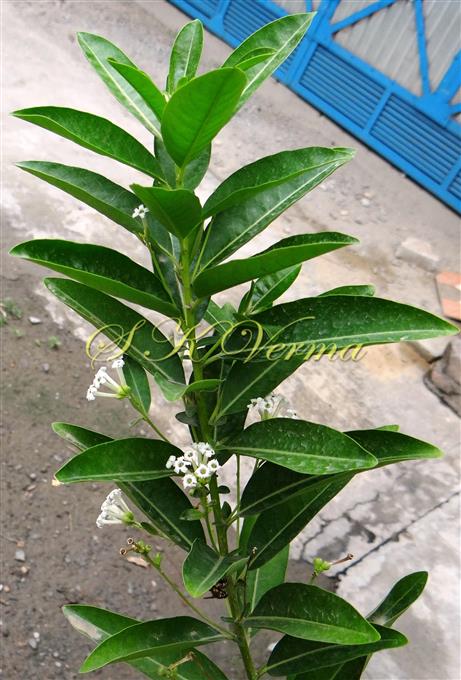
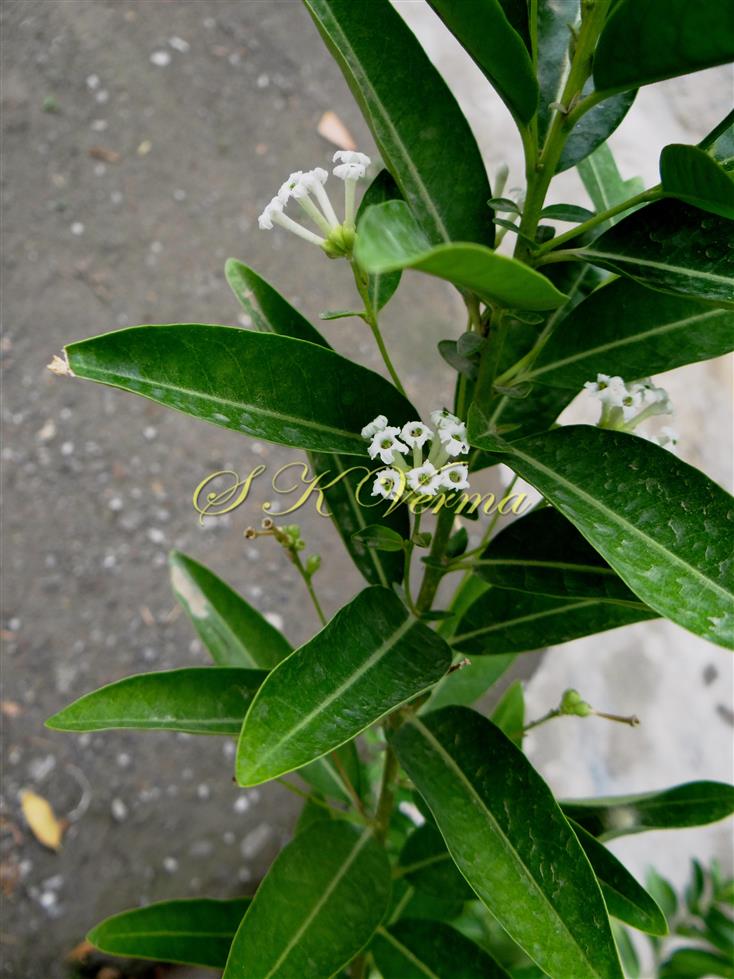
-DSC06705.jpg)
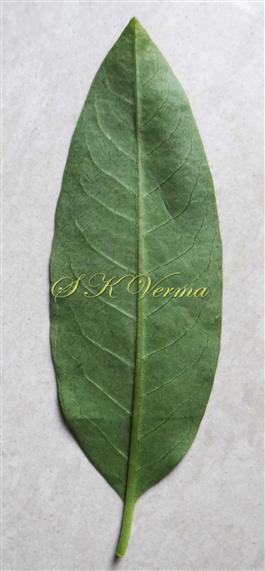
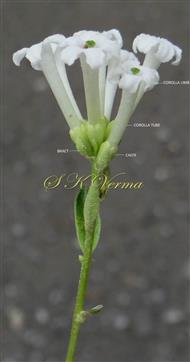
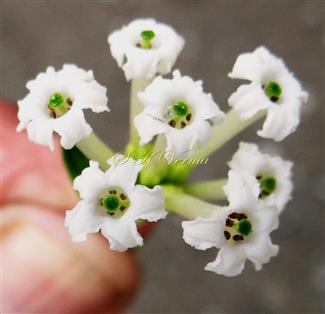
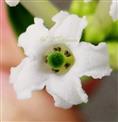
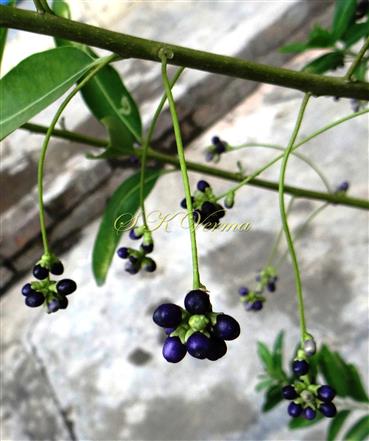
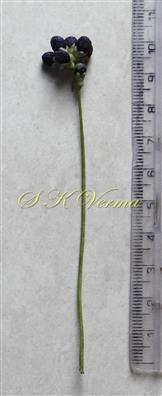
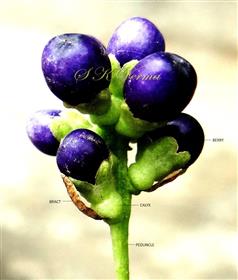



-DSC06705.jpg)






